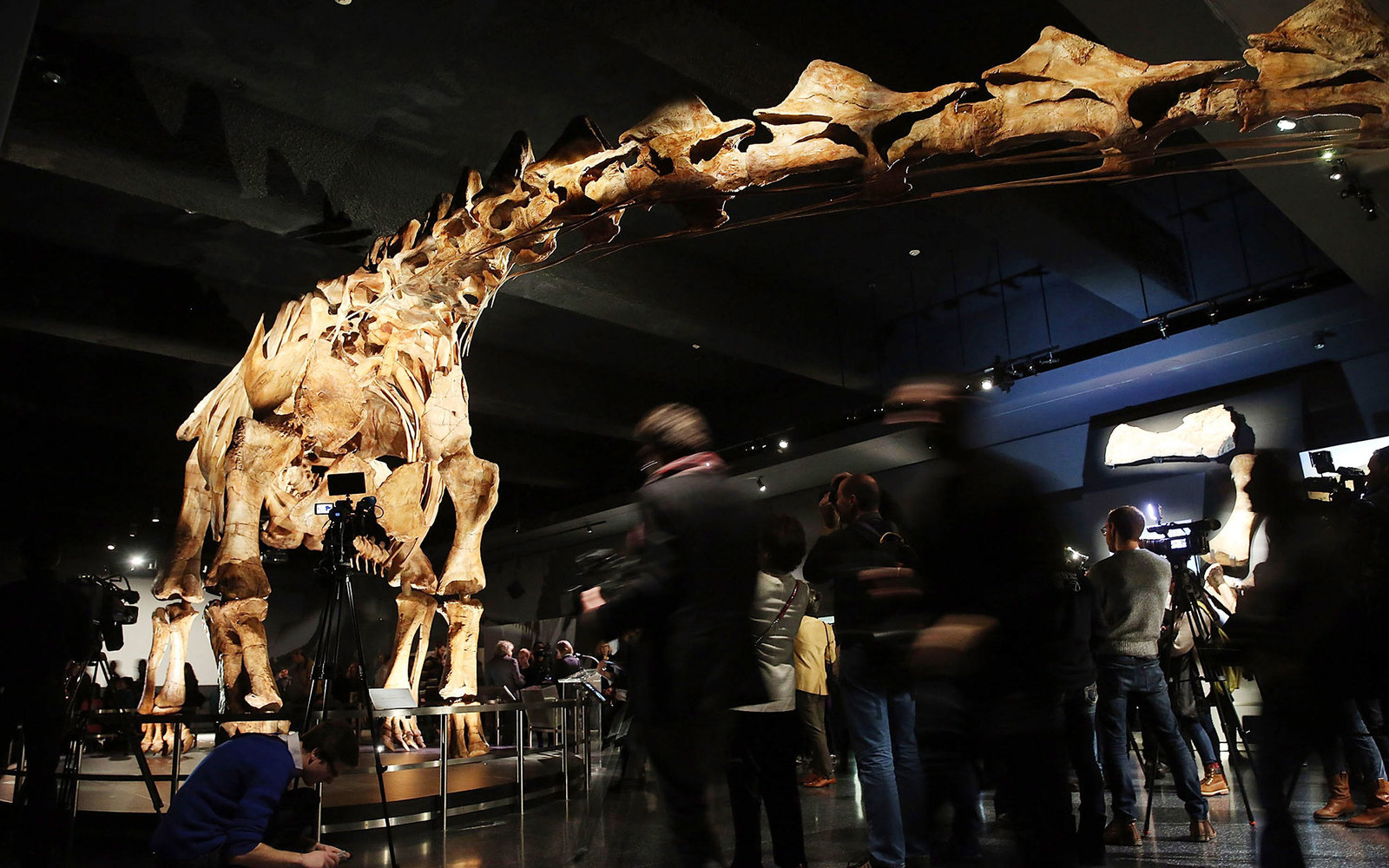 2016
2016
How many people does it take to build a Titanosaur? A lot, according to this video.
In 2014, paleontologists working in Argentina’s Patagonian desert made one of the most exciting discoveries of our time: the remains of the largest dinosaur to have ever to roamed the Earth (that we know of). Measuring in at 122 feet long and weighing an estimated 70 tons, the long-necked herbivore—dubbed the Titanosaur—dwarfs other giants of the prehistoric world including the Apatosaurus (86 feet long; 30–40 tons) and the museum’s own 94-foot blue whale. The Titanosaur’s staggering proportions are so record-breaking, in fact, that the room for exhibit in the American Museum of Natural History in New York, which opens to the public today, had to be retrofitted in order to hold the gargantuan beast—whose neck and skull extend into the hallway of the fossil floor.
It took an astounding six months to piece together the entire skeleton, which consists of over 200 bones and was recast using lightweight fiberglass. Five original fossils, including an eight-foot-long femur, are also temporarily on view. Check out this amazing time-lapse video of the final assembly in its new museum home:
How To Build A Titanosaur: Time-lapse#HowToBuildATitanosaur: After all the excavating, scanning, printing, and welding, the final step of building a #Titanosaur is assembling the gigantic pieces of the cast in its new Museum home. See the Titanosaur come together in this amazing time-lapse video, then visit the new Museum icon tomorrow, January 15, its first day on view for the public: http://bit.ly/231Npgj
Posted by American Museum of Natural History on Thursday, January 14, 2016